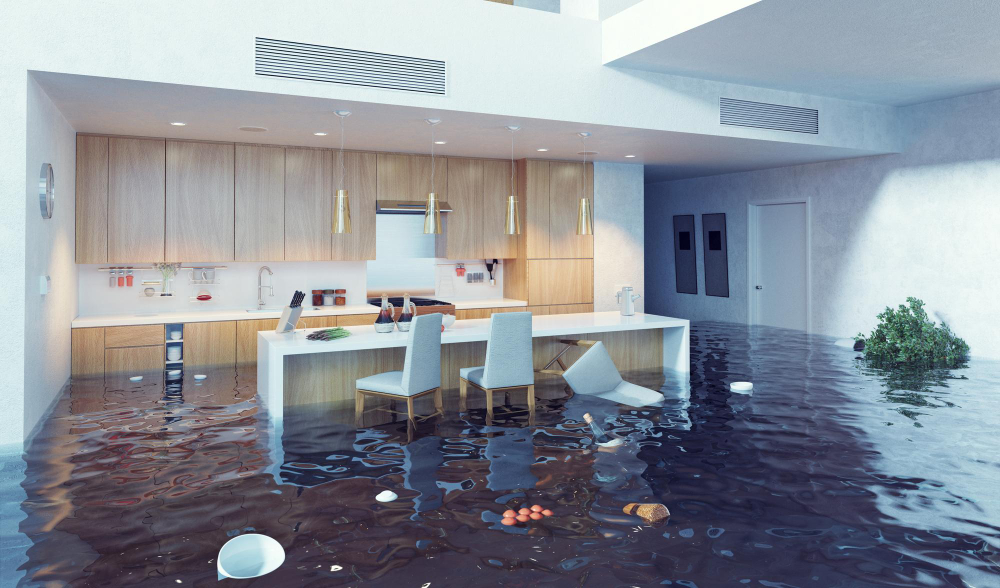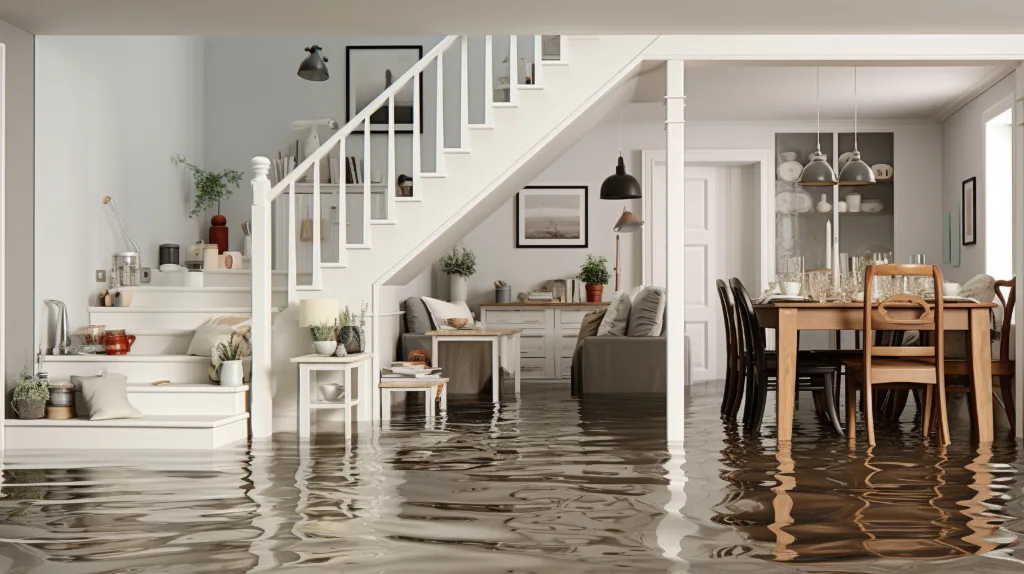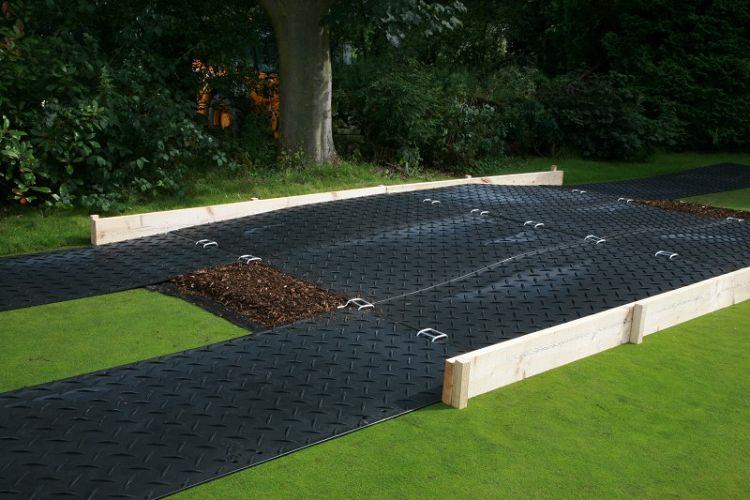Water damage can strike when you least expect it, turning your cozy home into a soggy mess. From natural disasters like floods to pesky plumbing problems, the sources of water damage
are varied and often unpredictable. Not only does this issue pose significant risks to your
property, but it can also lead to costly repairs and extensive restoration efforts. Understanding
the common causes of water damage is crucial for homeowners who want to protect their
investment and maintain a safe living environment. Let’s dive into what leads to these
unwanted leaks and how you can take proactive steps toward prevention.
Common Causes of Water Damage:
Water damage can occur for various reasons, often catching homeowners off guard. One of the
most common culprits is natural disasters. Heavy rainfall, hurricanes, and flooding can lead to
significant water intrusion in homes.
Plumbing issues also play a major role. Leaky pipes, clogged drains, and burst fixtures can
release large volumes of water unexpectedly. Even small leaks may cause substantial harm over
time if not addressed promptly.
Appliance malfunctions are another frequent source of trouble. Dishwashers, washing
machines, and refrigerators with ice makers can fail or develop leaks that go unnoticed until
serious damage occurs.
Each cause presents unique challenges that require immediate attention to prevent worsening
conditions within your home. Understanding these risks helps you stay vigilant about the
potential threats lurking behind walls or under floors.
A. Natural Disasters
Natural disasters are unpredictable forces that can wreak havoc on homes. Heavy rains,
hurricanes, and floods often lead to extensive water damage. When Mother Nature decides to
unleash her fury, the results can be devastating.
Floodwaters can surge rapidly, overwhelming drainage systems and inundating basements in
mere minutes. This sudden influx of water creates an urgent need for effective water damage
restoration services.
Even areas not directly impacted by a storm might experience issues from rising groundwateror overflowed rivers. Homeowners must remain vigilant during such events and understand
their risk factors.
Preparing your home for natural disasters is essential. Implementing measures like proper
landscaping and installing sump pumps can significantly reduce potential damage when disaster strikes.
B. Plumbing Issues
Plumbing issues are a leading cause of water damage in homes. Leaky pipes, worn-out seals,
and corroded fixtures can create significant problems if left unchecked. A small drip might seem
harmless at first, but over time it can lead to mold growth and structural damage.
Clogged drains also contribute to water woes. When wastewater can’t flow freely, it may back up into sinks or even flood your basement. This not only creates messes but poses serious
health risks.
Regularly inspecting plumbing is essential for prevention. Look for signs of leakage around
faucets and toilets, especially in hidden areas like under sinks or behind appliances.
Don’t forget about the hoses connected to washing machines and dishwashers; these can wear
out unexpectedly as well. Simple maintenance steps can save you from costly repairs down the
road while keeping your home safe from potential disasters.
C. Appliance Malfunctions
Appliance malfunctions are a significant source of water damage in homes. When appliances
like washing machines, dishwashers, and refrigerators fail, they can leak or overflow.
Old hoses and worn-out seals often contribute to these issues. A small crack or loose
connection can lead to a steady drip that goes unnoticed until it’s too late.
Regularly checking your appliances is essential. Look for signs of wear and tear on hoses or
connections. Replacing old parts before they break can save you from costly repairs down the
line.
Be mindful when using appliances. Don’t overload them, as this increases stress on components
and raises the risk of malfunctioning.
Consider installing leak detection systems near high-risk areas. These devices can alert you to
leaks early, allowing for prompt action before extensive damage occurs.
Effects of Water Damage on Homes

walls and flooring. Over time, this moisture breeds mold and mildew, posing health risks to you
and your family.
Structural integrity is another victim of water intrusion. Wood beams weaken, drywall
crumbles, and flooring may warp or buckle. The immediate aesthetic impact can lead to costly
repairs that extend beyond mere aesthetics.
Electrical systems are also at risk when exposed to excessive moisture. Corrosion can occur
within wiring, increasing the chances of short circuits or even fires.
Moreover, the scent of dampness lingers long after the repair work is done. This unpleasant
odor creates an unwelcoming atmosphere in what should be your sanctuary.
Addressing these effects promptly not only preserves your investment but also ensures a safe
living environment for everyone in the household.
How to Prevent Water Damage:
Regular maintenance is key to preventing water damage. Schedule routine inspections of your
plumbing system and roof. Look for leaks, cracks, or signs of wear. Address these issues
promptly to avoid bigger problems down the road.
Proper installation plays a crucial role as well. When replacing appliances like dishwashers or
washing machines, ensure they are installed correctly by professionals. This minimizes the risk
of malfunctions that can lead to leaks.
During extreme weather events, take proactive measures. Secure outdoor items that could be
blown away and clear gutters to prevent blockages. Consider sandbags in flood-prone areas.
Educate yourself about your home’s water shut-off valves. Knowing where they are located
allows you to act quickly in case of an emergency leak or burst pipe situation—an essential step
in safeguarding your property from water damage restoration needs later on.
A. Regular Maintenance and Inspections
Regular maintenance is your first line of defense against water damage. Small leaks or cracks
can often go unnoticed, leading to bigger problems down the road.
Schedule routine inspections of your plumbing and drainage systems. Check for any signs of wear or tear that could result in a costly disaster later on. Pay special attention to areas prone
to moisture, such as basements and crawl spaces.
Don’t overlook gutters and downspouts either. Clogged gutters can cause water overflow,
which may seep into your home’s foundation. Clear them out regularly to ensure proper flow
away from your property.
Additionally, inspect appliances like washing machines and dishwashers for leaks or faulty
hoses. A simple check can save you from extensive repairs in the event of a malfunction.
Prioritizing these tasks keeps small issues at bay while prolonging the life of your home’s
structures.
B. Proper Installation and Repairs
Proper installation of plumbing fixtures and appliances is crucial for preventing water damage.
A small oversight can lead to leaks that may go unnoticed until significant damage occurs.
Always hire qualified professionals for installations. They understand the nuances of local
building codes and best practices, ensuring everything is set up correctly from the start. It’s not
just about being functional; it’s about being safe and secure.
Regular repairs shouldn’t be overlooked either. Even minor issues like a dripping faucet or a loose connection can escalate into more extensive problems over time.
Additionally, using high-quality materials makes a difference. Cheaper options might save
money initially but often lead to future headaches with leaks or failures.
Investing in proper installation and timely repairs contributes significantly to long-term home
safety against potential water disasters.
C. Taking Precautions During Extreme Weather Events
Extreme weather events can be unpredictable, but preparation is key to minimizing damage.
Start by assessing your home’s vulnerabilities. Look for areas where water may seep in during
storms or heavy rain.
Install sump pumps in basements and ensure gutters are clean and functioning properly. This
helps redirect water away from the foundation of your home.
Consider sandbags if you live in flood-prone areas. They can act as a barrier against rising water
levels.
Check on trees near your property too; strong winds can cause branches to snap and damage
roofs or windows. Trimming them back reduces this risk significantly.
Have an emergency plan in place that includes shutting off utilities if necessary. Keeping
important documents safe from potential flooding ensures peace of mind during chaotic times.
Importance of Homeowner’s Insurance for Water Damage Coverage
 Homeowner’s insurance serves as a crucial safety net against unexpected water damage.
Homeowner’s insurance serves as a crucial safety net against unexpected water damage.
Whether caused by natural disasters or plumbing failures, the financial burden can be
overwhelming.
Most policies cover specific types of water damage, such as sudden leaks or burst pipes. This
coverage can save homeowners from costly repairs and extensive restoration work.
It’s essential to review your policy details carefully. Some events may not be included, like
flooding from heavy rains without separate flood insurance. Knowing what’s covered helps you prepare for potential risks.
Additionally, having adequate insurance provides peace of mind. When disaster strikes, you’ll
have support to manage both the emotional and financial stress that comes with significant
home repairs.
Investing in comprehensive homeowner's insurance is more than just a precaution; it’s an
essential part of responsible homeownership that safeguards your investment for years to
come.
Steps to Take if
Steps to Take if You Experience Water Damage
If you find yourself facing water damage, it’s essential to act quickly. First, ensure your safety by turning off the electricity in affected areas and wearing protective gear if necessary.
Next, stop the source of the water intrusion. This might involve shutting off your home's main water supply or contacting a plumber for urgent repairs.
Once the immediate threat is controlled, begin removing excess water as soon as possible. Use towels, mops, or even rented pumps for larger volumes of standing water. The faster you can remove it, the less likelihood there is for mold growth and further structural damage.
Afterward, dry out the area thoroughly using fans and dehumidifiers. It’s crucial to address all hidden moisture pockets that could lead to long-term problems.
Don’t forget about documenting everything. Take photos of damaged areas and keep records of any communication with insurance providers or contractors.
Consult professionals specializing in water damage restoration for an effective recovery process. They have tools and expertise needed to restore your home safely and efficiently while minimizing future risks.
Taking these steps can help mitigate damages and return your home back to its original state
swiftly.



